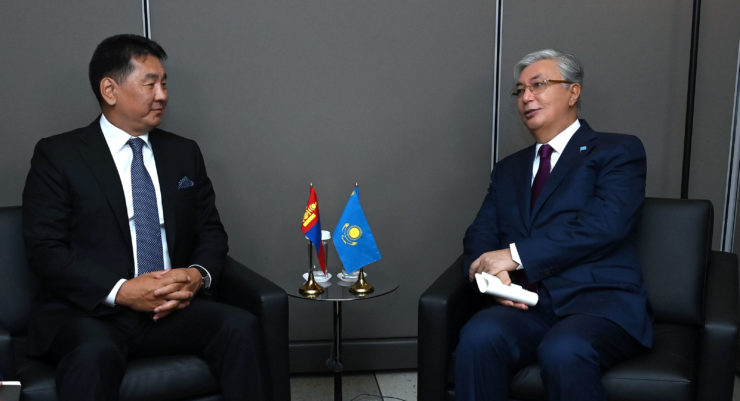
From the very beginning of its democracy, Mongolia has sought to define itself as an East Asian state, sometimes even fitting into the Asia-Pacific region (despite being a landlocked state). Recently, however, despite the continuation of the same trend in the country’s “geographical self-image,” Mongolia has begun to actively develop relations with Central Asian states as well.
Although diplomatic relations between most Central Asian countries and Mongolia were established as early as 1992, they have not been very active. The only exceptions are Mongolia’s relations with Kazakhstan and Kyrgyzstan, and even then there have been only a few high-level exchanges of visits in 31 years of relations with Kazakhstan. But in 2023, the frequency of relations with Central Asian partners, as well as the ambitiousness of plans in bilateral relations, began to grow rapidly. In particular, the following significant events have taken place in Mongolia’s relations with Central Asian countries in the first nine months of this year:
March 8-9: Visit of the Mongolian Foreign Minister to Uzbekistan and plans to open a Mongolian embassy in Tashkent.
May 30: Meeting of the Foreign Ministers of Mongolia and Kyrgyzstan.
July 2023: Visit of the Kyrgyzstan President to Mongolia and opening of the Embassy of Kyrgyzstan in Ulaanbaatar.
September 2023: Meeting with the Kazakhstan President Kassym-Jomart Tokayev at the UN, during which the parties agreed on a visit of the Kazakhstan President to Mongolia in 2024. This will be the first visit of a head of state in the history of relations between the two countries.
It is also worth mentioning the visit of the Foreign Minister of Mongolia to Turkmenistan in 2022.
Such activation of the Central Asian direction in Mongolia’s foreign policy cannot happen without objective reasons. Indeed, this process overlaps quite clearly with several other similar processes, between which some links can be traced. First of all, Mongolia has actively turned towards Central Asia almost in parallel with the expansion of formats of interaction between Central Asian states and China. In this regard, it is worth mentioning the China-Central Asia summit that took place in May 2023. Indeed, in recent years, China has not only continued to deepen its interactions with these countries in the areas of energy imports and transport and infrastructure construction, but has also supplemented their predominantly bilateral nature with such an integrated format with parallel participation of several countries.
At the same time, Mongolia’s turn towards Central Asia coincided chronologically with the expansion of bilateral relations with Turkey: on March 13-14, the first visit of the Mongolian Foreign Minister to Ankara since 1992 took place, during which he met with senior Turkish officials. This circumstance correlates with the intensification of Turkey’s “pan-Turkic” projects in Central Asia, as well as with the fact that the expansion of Mongolia’s contacts with Central Asian countries bypassed Tajikistan, the only non-Turkic republic in the region.
In addition, recent years have seen not only parallel promotion of Chinese and Turkish projects in the region, but also attempts to harmonize them – for example, Turkey intends to jointly implement with China the Trans-Caspian Transport Route project in Central Asia.
Thus, it can be concluded that the intensification of Mongolia’s ties with Central Asia is taking place for a number of reasons. First of all, the Mongolian leadership realized the shifts in the geopolitical situation in Central Asia, which consists in the active promotion of ambitious political and economic projects in the region by Turkey and China, probably hoping for the prospect of participating in them or benefiting from their promotion. It can be assumed that Mongolia has started to pay attention to the growing competition of major continental players in Central Asia, as well as to the general revitalization of geopolitical and geo-economic processes in the region. Mongolia probably also wants to minimize the losses it may incur if Central Asian transport routes are developed, which can be considered an alternative to routes from China to Europe via Russia and Mongolia.
Boris Kushkhov, the Department for Korea and Mongolia at the Institute of Oriental Studies of the Russian Academy of Sciences, exclusively for the online magazine “New Eastern Outlook”.
